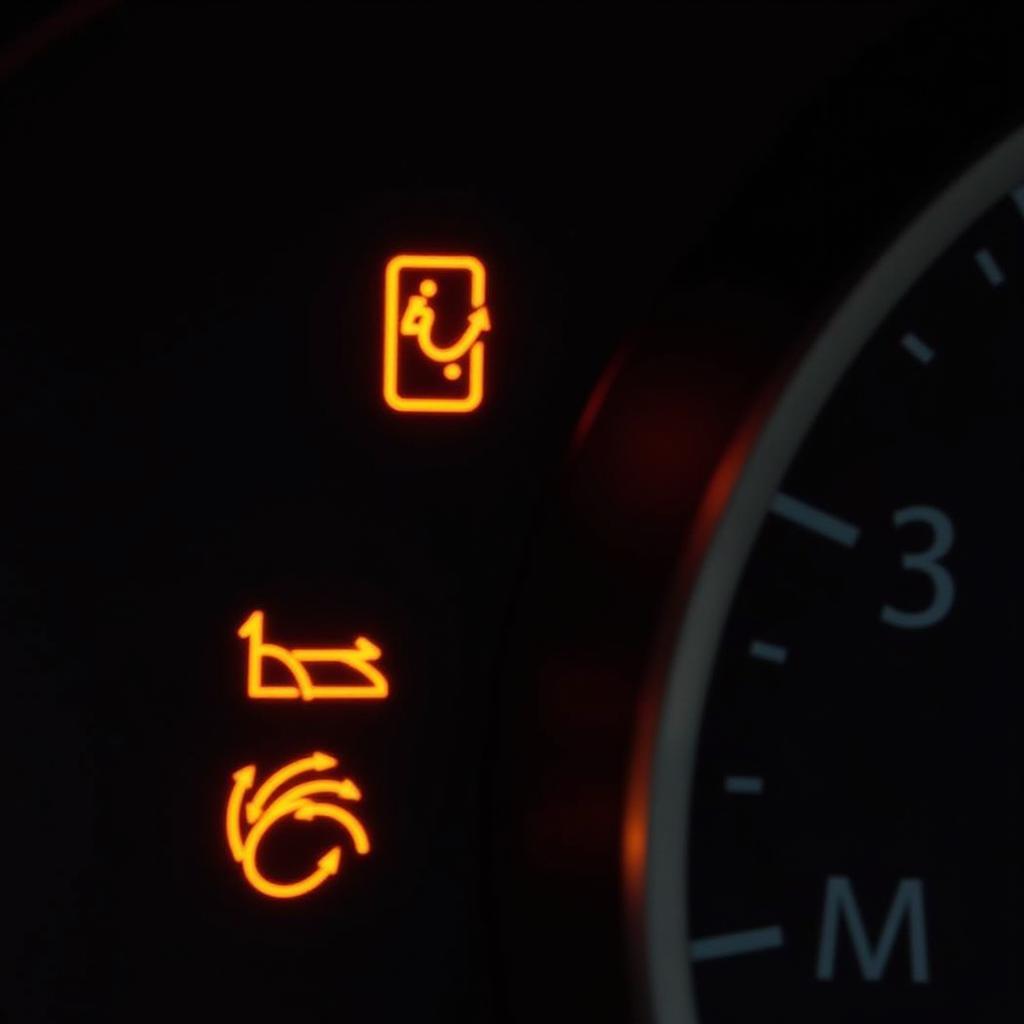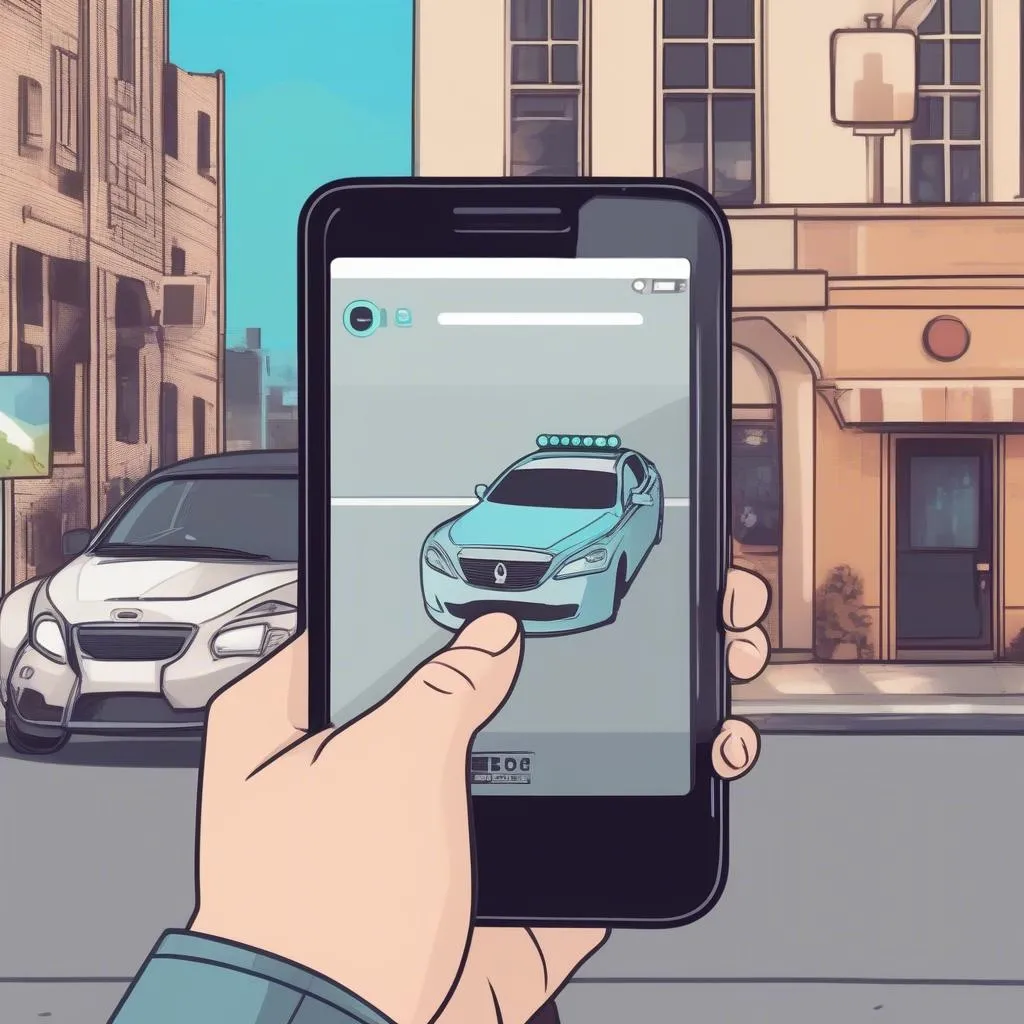A flashing or illuminated light on your Seat Ibiza’s dashboard can be alarming. Understanding your Seat Ibiza warning lights dashboard is crucial for maintaining your vehicle’s health and safety. This guide will help you decipher those cryptic symbols and empower you to take appropriate action.
Common Seat Ibiza Warning Lights and Their Meanings
Your dashboard is like your car’s communication center. It uses various warning lights to alert you to potential issues ranging from minor inconveniences to serious malfunctions. Knowing what each symbol represents can save you time, money, and potentially prevent a breakdown.
Understanding the Severity of Warning Light Colors
The color of the warning light generally indicates the severity of the issue:
- Red: Indicates a serious problem that requires immediate attention. Pull over safely and consult your owner’s manual or a qualified mechanic.
- Amber/Yellow: Suggests a less urgent issue, but one that should be addressed soon. Schedule a check-up with your mechanic at your earliest convenience.
- Green/Blue: These lights typically indicate a system is active, such as headlights or cruise control.
Decoding Specific Warning Lights on your Seat Ibiza
Let’s break down some common Seat Ibiza warning lights:
- Engine Management Light (EML): This amber light can indicate a range of engine-related problems, from a faulty sensor to a more serious issue. Diagnostic tools are needed to pinpoint the exact cause.
- Anti-lock Braking System (ABS) Light: If this amber light stays on, it suggests a problem with your ABS system. Your regular brakes should still function, but ABS might not be available in emergency braking situations.
- Electronic Stability Program (ESP) Light: This amber light can flicker when the system is active, but if it stays illuminated, it signals a potential fault in the stability control system.
- Tyre Pressure Monitoring System (TPMS) Light: An illuminated amber light indicates low tyre pressure. Check your tyre pressures and inflate them to the recommended levels.
- Airbag Warning Light: This red light suggests a problem with the airbag system. Have this checked immediately as airbags are critical safety features.
 Amber Warning Lights on Seat Ibiza Dashboard
Amber Warning Lights on Seat Ibiza Dashboard
Remote Diagnostics and Software Solutions for Seat Ibiza Warning Lights
Modern technology offers advanced solutions for diagnosing and even fixing some warning light issues remotely. Specialized software can access your vehicle’s computer system, read error codes, and sometimes even reprogram modules to resolve software-related glitches.
“Remote diagnostics can save drivers time and money, especially for minor software issues,” says David Miller, Senior Automotive Diagnostic Technician at AutoTech Solutions. “It’s a convenient way to get a preliminary assessment and potentially avoid a trip to the workshop.”
How Remote Diagnostics Works
Remote diagnostics involve connecting a diagnostic tool to your vehicle’s OBD-II port and then transmitting data wirelessly to a specialist who can analyze the information.
- Connect the diagnostic tool.
- Establish a secure connection.
- Transmit the data.
- Receive a diagnosis and potential solutions.
Conclusion
Understanding your Seat Ibiza warning lights dashboard is essential for responsible car ownership. By familiarizing yourself with the various symbols and utilizing remote diagnostics when appropriate, you can address potential issues proactively and keep your Seat Ibiza running smoothly. Don’t ignore those warning lights – they are there to help you!
“Regularly checking your dashboard and addressing warning lights promptly can prevent small issues from escalating into major repairs,” adds Sarah Johnson, Lead Software Engineer at AutoConnect Solutions.
FAQ
- What should I do if a red warning light comes on? Pull over safely as soon as possible and consult your owner’s manual or a qualified mechanic.
- Can I ignore an amber warning light? While amber lights indicate less urgent issues, they should still be addressed promptly to prevent potential problems.
- How often should I check my dashboard? It’s a good practice to glance at your dashboard regularly, especially before and after longer journeys.
- What is the OBD-II port? The OBD-II port is a standardized connector used for vehicle diagnostics.
- Is remote diagnostics suitable for all car problems? While remote diagnostics can be very effective for software-related issues, physical problems may still require a hands-on inspection by a mechanic.
- How can I find a reliable remote diagnostics service provider? Research online reviews and seek recommendations from trusted sources.
- Are there any risks associated with remote diagnostics? Reputable providers use secure connections to protect your vehicle’s systems. Always choose a trusted and certified provider.



